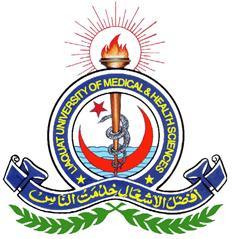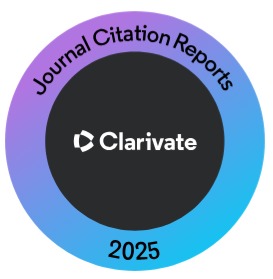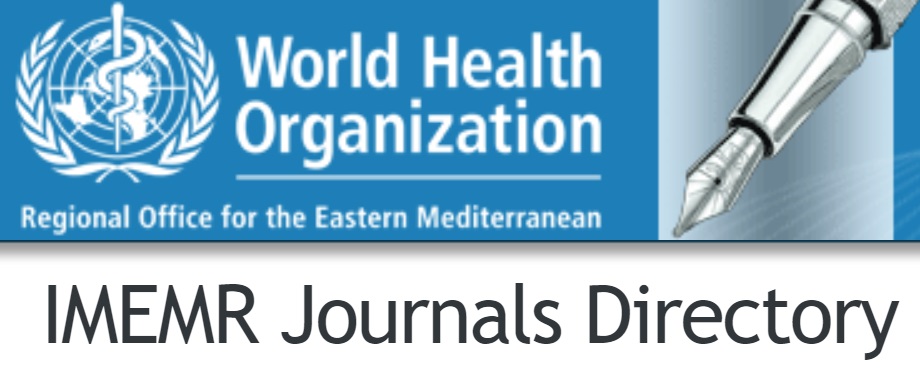Two Oncoviruses of HPV and EBV in Breast Cancer: An Iran-based Study
Keywords:
High-risk HPV, EBV, Viral infectionViral infection, breast cancerAbstract
OBJECTIVE: To answer the question of whether viral infections such as Human papillomavirus (HPV) and Epstein-Barr virus (EBV) are involved in the occurrence of breast cancer or not.
METHODOLOGY: In this case-control study, 50 paraffin-embedded breast samples (FFPE) and 50 non-cancerous FFPE samples were prepared from patients referred to Abadan hospitals from 2018 to 2021 to identify the genome of HPV and EBV by polymerase chain reaction (PCR). Data were analyzed using SPSS 15 with P-values of 0.05. Confirmed breast cancer biopsy samples with no medical history of chemotherapy and/or radiotherapy, the patient not being pregnant at the time of sampling, not using anti-cancer treatments, and not suffering from systemic inflammatory diseases such as rheumatoid arthritis. Patients of any age, with any breast cancer, and any size or stage of tumor were included without restrictions.
RESULTS: Using PCR, HPV DNA was detected in 7/50 (14%) and 2/50(4%) of breast cancers and normal control, respectively. Moreover, 71.42% and 28.57% of HPV-infected persons in the patient's group were genotypes 16 and 18, respectively. All HPV-infected people in the control group were low-risk genotypes 26 and 53. Also, EBV DNA was found in 2/50 (4%) and 6/50 (12%) of breast cancers and control samples, respectively. Co-infection was not detected in samples.
CONCLUSION: Although our study does not provide substantial Evidence about the role of viral infection in the progressiveness of breast tumors, significant studies have shown the critical role of these infections in the progression of breast tumors.
References
Azamjah N, Soltan-Zadeh Y, Zayeri F. Global trend of breast cancer mortality rate: a 25-year study. Asian Pac J Cancer Prev. 2019; 20(7): 2015-2020.doi: 10.31557/APJCP.2019.20.7.2015.
Roshandel G, Ghanbari-Motlagh A, Partovipour E, Salavati F, Hasanpour-Heidari S, Mohammadi G et al. Cancer incidence in Iran in 2014: results of the Iranian National Population-based Cancer Registry. Cancer Epidemiol, 2019; 61: 50-58. doi: 10.1016/j.canep.2019. 05.009. Epub 2019 May 25.
Naushad W, Surriya O, Sadia H. Prevalence of EBV, HPV and MMTV in Pakistani breast cancer patients: a possible etiological role of viruses in breast cancer. Infect Genet Evol. 2017; 54: 230-237. doi: 10.1016/j.meegid.2017.07.010. Epub 2017 Jul 10.
Gupta I, Jabeen A, Al-Sarraf Reem, Farghaly H, Vranic S, Sultan AA et al. The co-presence of high-risk human papillomaviruses and Epstein-Barr virus is linked with tumor grade and stage in Qatari women with breast cancer. Hum Vaccin Immunother. 2021; 17(4): 982-989. doi: 10.1080/ 21645515.2020.1802977. Epub 2020 Oct 2.
Della Fera AN, Warburton A, Coursey TL, Khurana S, McBride AA. Persistent human papillomavirus infection. Viruses. 2021; 13(2): 321. Published online 2021 Feb 20. doi: 10.3390/v13020321.
Fernandes Q, Gupta I, Vranic S, Al-Moustafa A. Human papillomaviruses and epstein–barr virus interactions in colorectal Cancer: A brief review. Pathogens. 2020; 9(4): 300. doi: 10.3390/pathogens9040300.
Dudaniec K, Westendorf K, Nossner E, Uckert W. Generation of Epstein-Barr virus antigen-specific T cell receptors recognizing immunodominant epitopes of LMP1, LMP2A, and EBNA3C for immunotherapy. Hum Gene Ther. 2021; 32(17-18): 919-935. doi: 10.1089/hum.2020.283. Epub 2021 May 14.
Fani M, Mahmoodi P, Emadzadeh M, Avan A, Karimi E, Ferns GA et al. Correlation of human papillomavirus 16 and 18 with cervical Cancer and their diagnosis methods in Iranian women: A systematic review and meta-analysis. Curr Probl Cancer. 2020; 44(1): 100493. doi: 10.1016/j.currproblcancer.2019.06.008. Epub 2019 Jul 2.
Mahmoodi P, Fani M, Rezayi M, Avan A, Pasdar Z, Karimi E et al., Early detection of cervical Cancer based on high?risk HPV DNA?based genosensors: A systematic review. Biofactors. 2019; 45(2): 101-117. doi: 10.1002/biof.1465. Epub 2018 Nov 29.
Boda D, Docea AO, Calina D, Ilie MA, Carumtu C, Zurac S et al. Human papillomavirus: Apprehending the link with carcinogenesis and unveiling new research avenues. Int J Oncol. 2018; 52(3): 637-655. doi: 10.3892/ijo.2018.4256. Epub 2018 Jan 29.
Aguayo F, Khan N, Koriyama C, Gonzalez C, Ampuero S, Padilla O et al., Human papillomavirus and Epstein-Barr virus infections in breast cancer from Chile. Infect Agent Cancer. 2011; 6: 7. Published online 2011 Jun 23. doi: 10.1186/1750-9378-6-7.
Capra G, Schillaci R, Bosco L, Roccheri MC, Perino A, Ragusa MA et al. HPV infection in semen: results from a new molecular approach. Epidemiol Infect. 2019; 147: e177. doi: 10.1017/S0950268819000621.
Szymonowicz KA, Chen J. Biological and clinical aspects of HPV-related cancers. Cancer Biol Med. 2020; 17(4): 864-878. doi: 10.20892/j.issn.2095-3941.2020.0370. Epub 2020 Dec 15.
Farrell PJ. Epstein–Barr virus and Cancer. Annu Rev Pathol. 2019; 14: 29-53. doi: 10.1146/annurev-pathmechdis-012418-013023. Epub 2018 Aug 20.
Fulkerson HL, Nogalski MT, Collins-McMillen D, Yurochko AD. Overview of human cytomegalovirus pathogenesis. Methods Mol Biol. 2021; 2244: 1-18. doi: 10.1007/978-1-0716-1111-1_1.
Fozuni E, Arabzadeh SM, Mollaei HR, Iranpour M, Afsar RM. Evaluation frequency of human herpes virus type 8 in patients with breast cancer. ResearchSquare. 2020. Preprint: doi: 10.21203/rs.3.rs-60897/vi.
Uche IK, Kousoulas KG, Rider PJF. The effect of herpes simplex virus-type-1 (HSV-1) oncolytic immunotherapy on the tumor microenvironment. Viruses. 2021; 13(7): 1200. doi: 10.3390/v1307 1200.
He L, He J. Distribution of high-risk HPV types among women in Sichuan province, China: a cross-sectional study. BMC Infect Dis. 2019; 19(1): 390. doi: 10.1186/s12879-019-4038-8.
Aghdam MK, Nadji SA, Khoddami M, Dezfulli A, Khademi Y. Epstein-Barr Virus and breast carcinoma in Iran. Jundishapur J Microbiol. 2017; 10(10): e12800. doi: 10.5812/jjm.12800.
Kalkan A, Ozdarendeli A, Bulut Y, Yekeler H, Cobanoglu B, doymaz MZ. Investigation of Epstein-Barr virus DNA in formalin-fixed and paraffin-embedded breast cancer tissues. Med Princ Pract. 2005; 14(4): 268-271. doi: 10.1159/000085748.
Ferreira DA, Tayyar Y, Idris A, McMillan NAJ. A "Hit-and-Run" affair – A possible link for cancer progression in virally driven cancers. Biochimica Biophysica Acta - Reviews on Cancer. 2021; 1875(1): 188476.
Mofrad MG, Kazeminezhad B, Faghihloo E. Prevalence of Epstein-Barr virus (EBV) in Iranian breast carcinoma patients. Asian Pac J Cancer Prev. 2020; 21(1): 133-37. doi: 10.31337/APJCP. 2020.21.1.133.
Pai T, Gupta S, Gurav M, Nag S, Shet T, Patil A et al. Evidence for the association of Epstein-Barr Virus in breast cancer in Indian patients using in-situ hybridization technique. Breast J. 2018; 24(1): 16-22. doi: 10.1111/tbj.12828. Epub 2017 May 30.
Glenn WK, Heng B, Delprado W, Lacopetta B, Whitaker NJ, Lawson JS. Epstein-Barr virus, human papillomavirus and mouse mammary tumour virus as multiple viruses in breast cancer. PloS One. 2012; 7(11): e48788. doi: 10.1371/journal.pone.0048788. Epub 2012 Nov 19.
Heng B, Glenn WK, Ye Y, Tran B, Delprado W, Lutze-Mann L et al. Human papillomavirus is associated with breast cancer. Br J Cancer. 2009; 101(8): 1345-1350.
Gumus M, Yumuk PF, Salepci T, Aliustaoaglu M, Dane F, Ekenel M et al. HPV DNA frequency and subset analysis in human breast cancer patients' normal and tumoral tissue samples. J Exp Clin Cancer Res. 2006; 25(4): 515-521.
de Cremoux P, Thioux M, Lebigot I, Sigal-Zafrani B, Salmon R, Sastre-Garau X et al. No evidence of human papillomavirus DNA sequences in invasive breast carcinoma. Breast Cancer Res Treat. 2008; 109(1): 55-58.
Lindel K, Forster A, Altermatt HJ, Greiner R, Gruber G. Breast cancer and human papillomavirus (HPV) infection: no evidence of a viral etiology in a group of Swiss women. Breast. 2007; 16(2): 172-177. doi: 10.1016/j.breast. 2006.09.001. Epub 2006 Nov 7.
Ahangar-Oskouee M, Shahmahmoodi S, Jalilvand S, Mahmoodi M, Ziaee AA, Esmaelli HA et al. No detection of high-risk human papillomaviruses in a group of Iranian women with breast cancer. Asian Pac J Cancer Prev. 2014; 15(9): 4061-65.
Downloads
Published
How to Cite
Issue
Section
License
Copyright (c) 2023 Journal of Liaquat University of Medical & Health Sciences

This work is licensed under a Creative Commons Attribution-NonCommercial-ShareAlike 4.0 International License.
Submission of a manuscript to the journal implies that all authors have read and agreed to the content of the undertaking form or the Terms and Conditions.
When an article is accepted for publication, the author(s) retain the copyright and are required to grant the publisher the right of first publication and other non-exclusive publishing rights to JLUMHS.
Articles published in the Journal of Liaquat University of Medical & health sciences are open access articles under a Creative Commons Attribution-Noncommercial - Share Alike 4.0 License. This license permits use, distribution and reproduction in any medium; provided the original work is properly cited and initial publication in this journal. This is in accordance with the BOAI definition of open access. In addition to that users are allowed to remix, tweak and build upon the work non-commercially as long as appropriate credit is given and the new creations are licensed under the identical terms. Or, in certain cases it can be stated that all articles and content there in are published under creative commons license unless stated otherwise.























